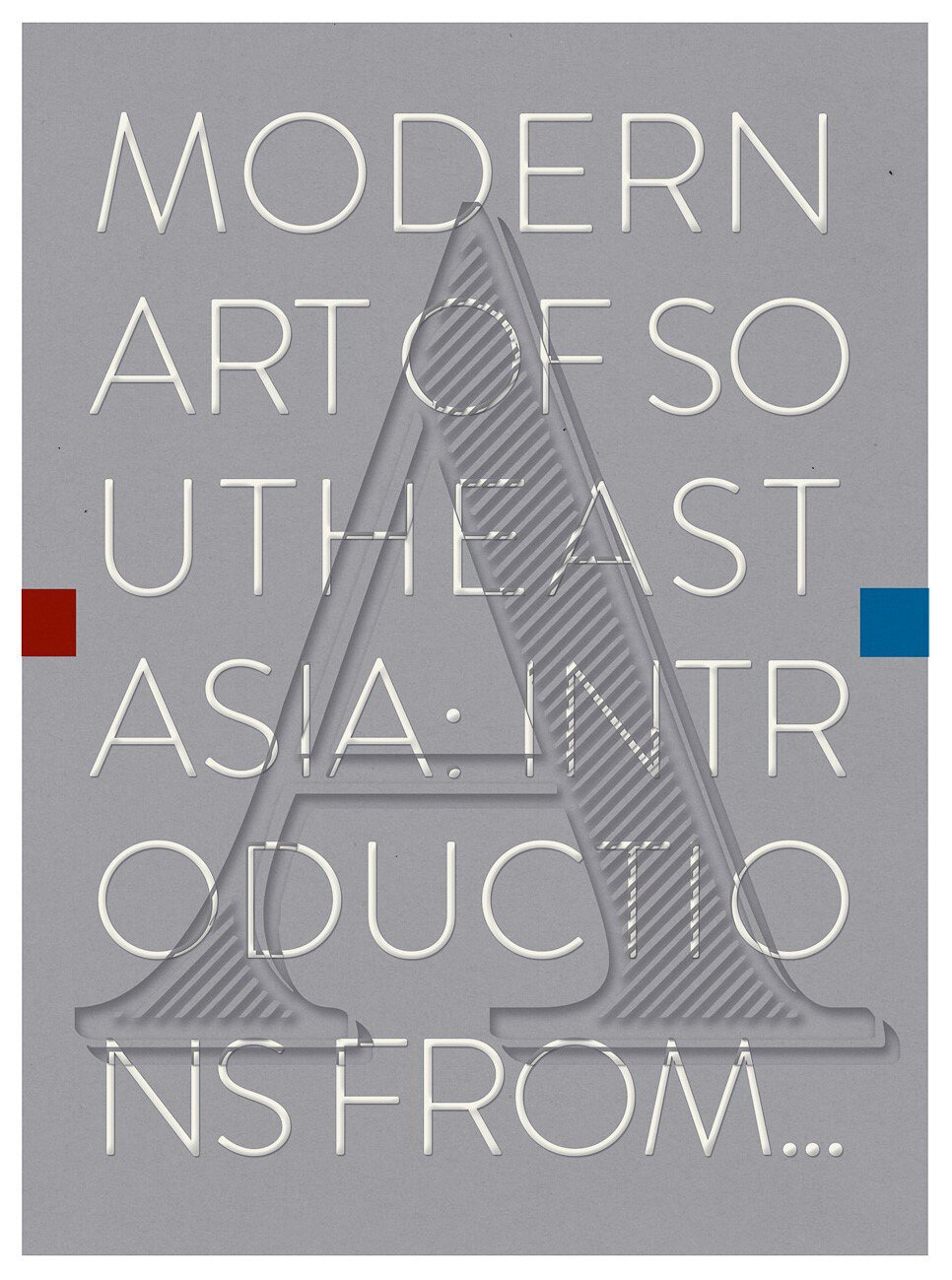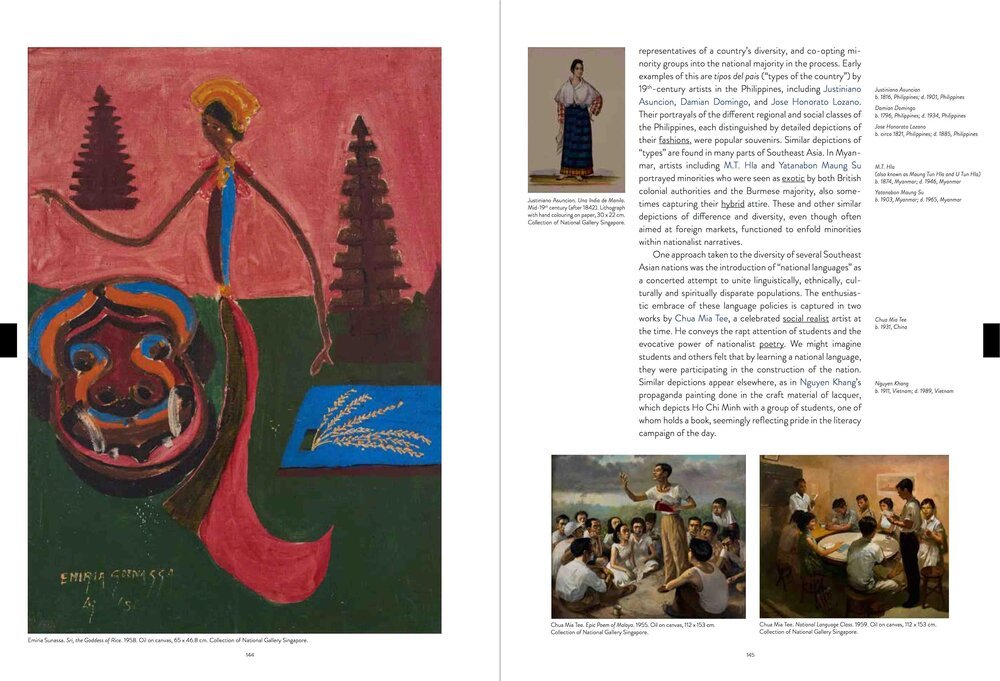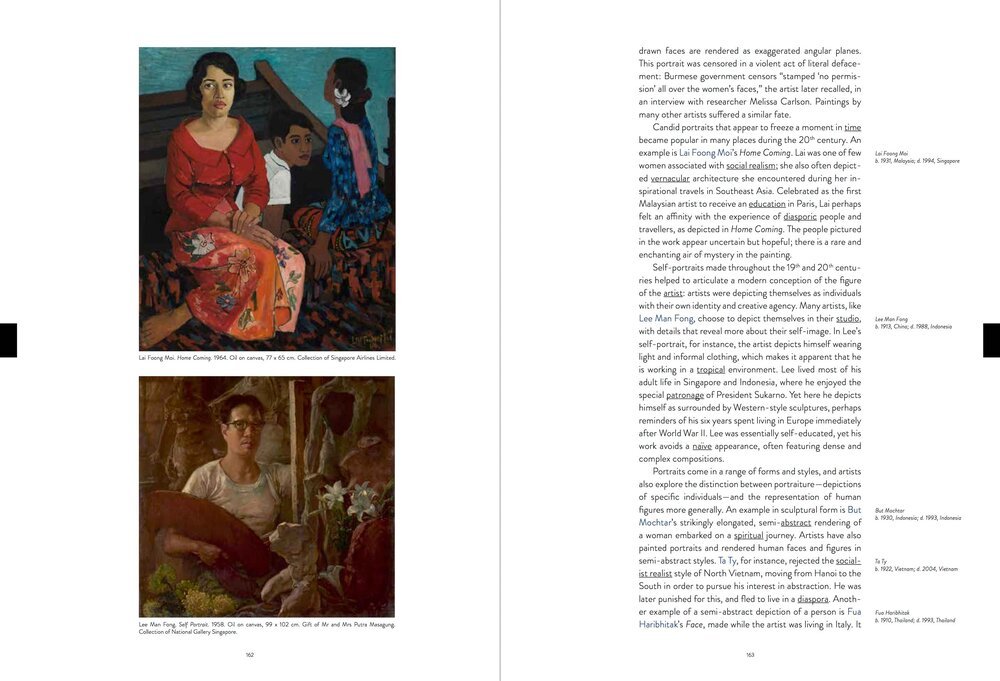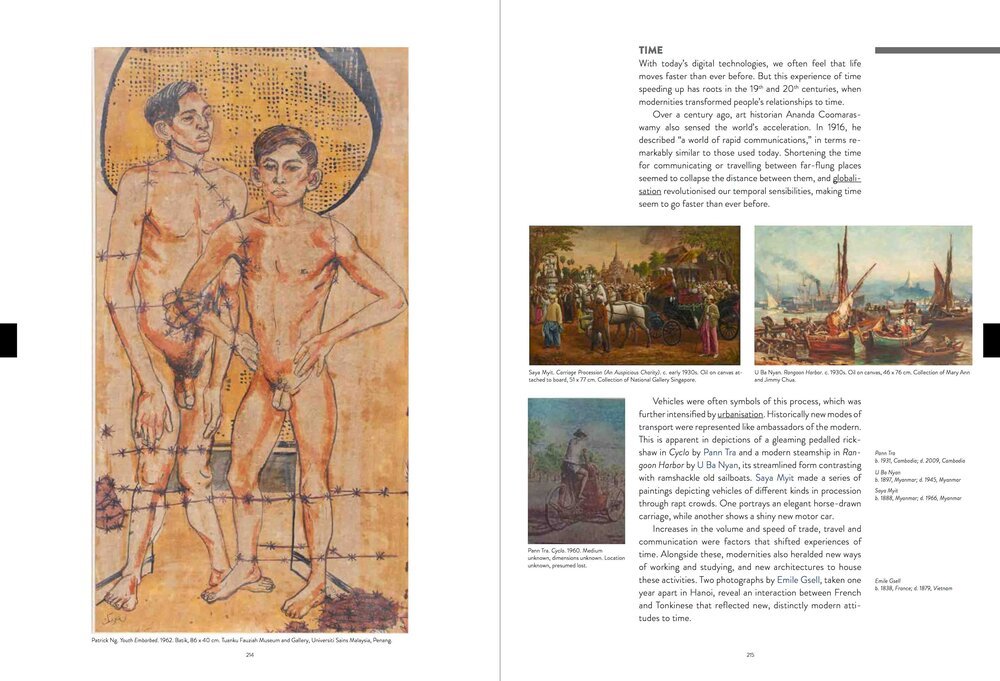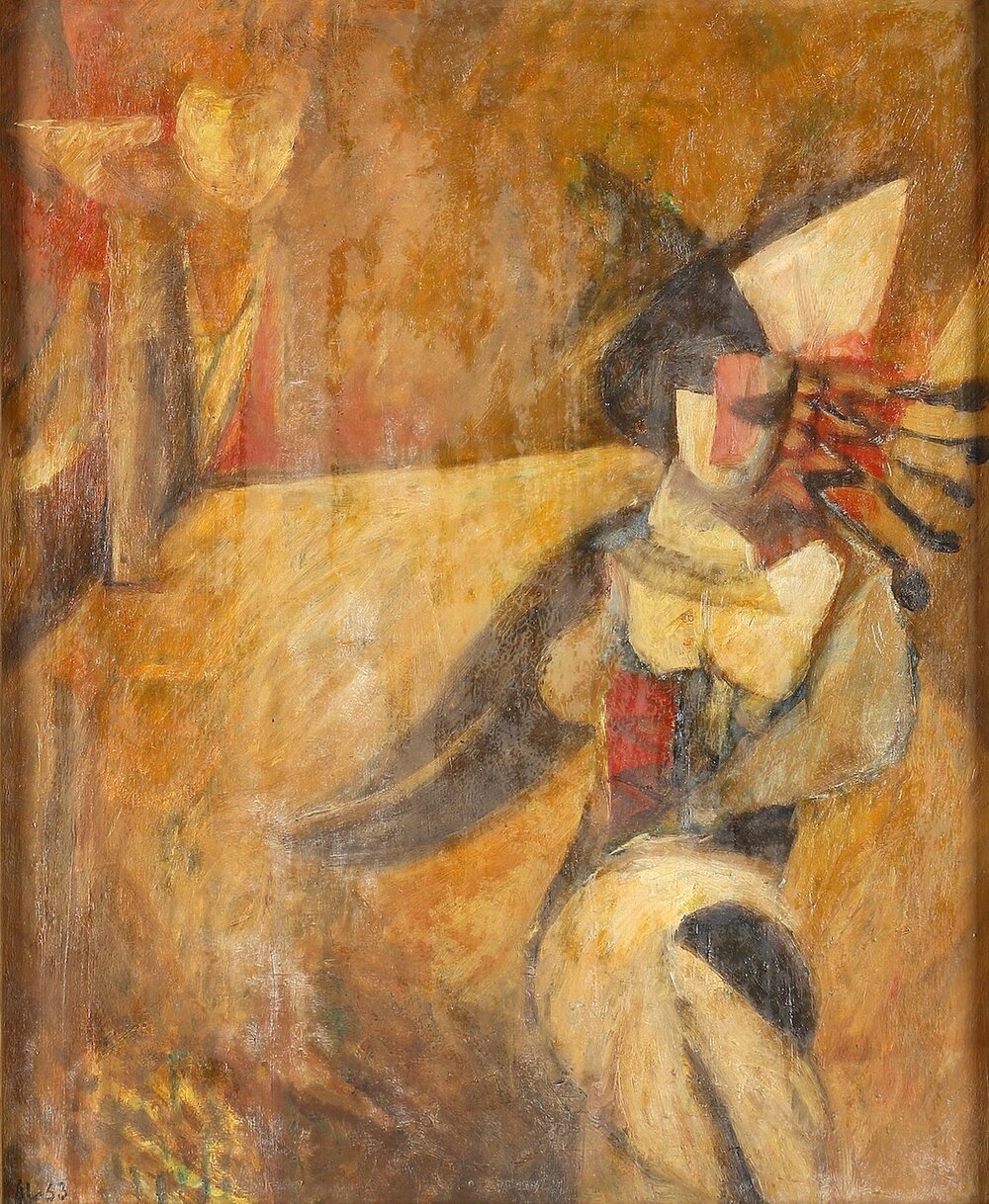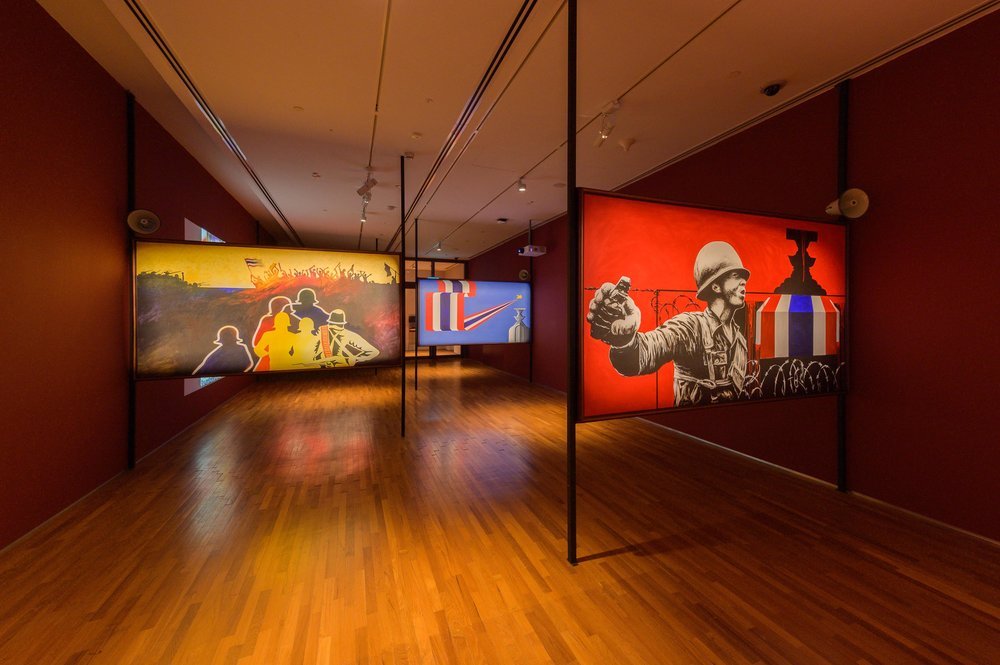Review of 'Modern Art of Southeast Asia: Introductions from A to Z' by Roger Nelson
Rethinking form, content and accessibility
By Ian Tee
Book cover of 'Modern Art of Southeast Asia: Introductions from A to Z' (2019), written by Roger Nelson and published by National Gallery Singapore. Images reproduced with the permission of National Gallery Singapore.
In the first episode of his four-part documentary series 'Ways of Seeing' (1972), the late John Berger said: "… the art book depends upon reproductions. Yet often what the reproductions make accessible, the text makes inaccessible. What may become part of our language is jealously guarded and kept within the narrow preserves of the art expert." Nearly 50 years later, Berger is still popular among art students and laypeople alike for his straightforward language and ability to tell stories that change the reader's perspective.
'Modern Art of Southeast Asia: Introductions from A to Z', written by Roger Nelson and published by National Gallery Singapore (NGS), aims to offer "an informative first encounter with art" and be "a rewarding resource for students". It is the first primer on modern art in the region and follows a transnational approach to narrate these histories through 60 key ideas and more than 200 artwork examples. Arranged alphabetically, readers are encouraged to discover their own connections and jump from one entry to the next, rather than reading in sequence. Against this recommendation, I read 'A to Z' from front to back to ensure that none of its content is missed. As one might expect, there are slight instances of repetition in some entries but having this complete overview allowed me to systematically break down the book's strengths and weaknesses.
Page spread from 'Modern Art of Southeast Asia: Introductions from A to Z'. Images reproduced with the permission of National Gallery Singapore.
Overall, the tone is friendly and Nelson took care to explain terminologies in simple language, while highlighting nuanced differences, such as that between modern and modernity or social realism and socialist realism (each of these terms are given their own entries). However, the level of exploration and register varied quite significantly. New readers will appreciate how art historical methodologies and basic elements of the art ecosystem are expounded, for instance, the function of exhibitions and why they are extremely important in the writing of art histories. Nelson also attempts to bring in a Southeast Asian-centric perspective to loaded concepts as such Flatness, but specialist audiences may find it too cursory. In trying to strike a balance between breadth and depth, as well as casualness and academic rigour, the book caters more to the amateur.
Yet that is not to say that there aren’t fresh insights. One particularly provocative reassessment comes from the revelation that Juan Luna murdered his wife Paz Pardo de Tavera, and her mother Juliana Gorricho in a jealous rage in 1892. This detail is contextualised within the section on biography, to which Nelson asks: "How can the perpetrator of such violence (and, arguably, misogyny) still be celebrated as a national (and, more recently, regional) hero? And how might his subsequent portraits of women – including his own female relatives – be interpreted in light of this biographical fact?"
The author also airs potential research propositions throughout the volume, such as Ahmad Sadali's connections with Latin America even suggesting a study of his work in relation to Lygia Clark. However, the lack of citations within the main text is a hindrance for readers who wish to follow up with their own research. Here, I think that adhering to academic conventions would have been more helpful, especially for sections where the works of other historians are referenced. While an extensive reading list is compiled at the end of the book, I wish it had been more organised.
Page spread from 'Modern Art of Southeast Asia: Introductions from A to Z'. Images reproduced with the permission of National Gallery Singapore.
Page spread from 'Modern Art of Southeast Asia: Introductions from A to Z'. Images reproduced with the permission of National Gallery Singapore.
After reading 'A to Z' in its entirety, it becomes clear that Nelson takes the promises he made in the introduction to heart: to "juxtapose more famous names and images with lesser known figures", and to "deliberately include as many artists who are women". Even though only a quarter of the artists discussed are female, subtle editorial decisions are made to enhance the quality of their appearances through strategic placement and scale of artwork images. It is exciting to see Lai Foong Moi and Lee Man Fong given the same prominence; or in the case of queer representation, an unabashed, full-page reproduction of Patrick Ng's male nude figures which is a rare depiction in Southeast Asian modern art. Imbalances are consciously woven into the text as active reminders of how larger socio-material forces impact artists and the artworks produced. Indeed, when history focuses on the singular figure of the artist, the contribution of women and their invisible labour, which makes exhibitions possible, is overlooked.
The Social Table. Image courtesy of National Gallery Singapore.
As a concluding remark, I return to Berger and 'Ways of Seeing', particularly how the documentary format enhanced its arguments by utilising still imagery, sound manipulation and the occasional breaking of the fourth wall. My main criticism of 'A to Z' is its inefficacy in facilitating the movement between ideas and this is due to constraints of the book format, remaining linear rather than rhizomatic. Key terms are highlighted with underlines, which reminds readers of a web page with hyperlinks. To this end, one can imagine an extension of its content onto a digital platform or even the NGS's Social Table, an interactive touch display in the museum’s public area. Currently, it allows viewers to explore artist connections and create posters of their favourite artworks in the collection. The potential for this interface is vast, so is the space for rethinking form and content accessibility.
Despite its modest point of entry, 'Modern Art of Southeast Asia: Introductions from A to Z' aspires to tell big stories and show how multiple, even conflicting, narratives can exist simultaneously. It goes beyond explaining the meaning of specific terminologies, delving into the important questions that can be asked around them. Recalling Berger, perhaps what is jealously guarded today is not language, but the medium.

